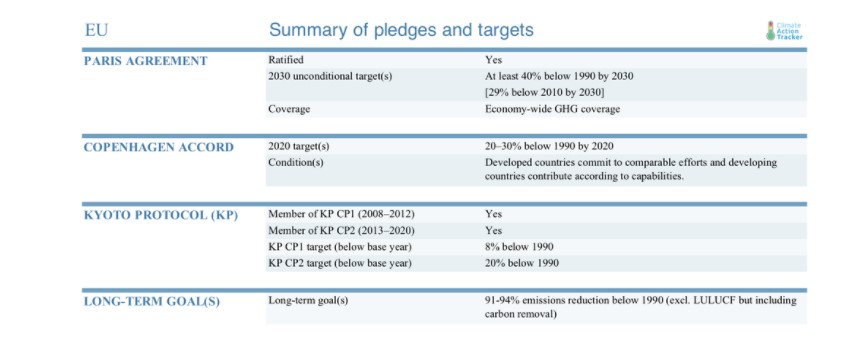During the last couple of decades, the increasing industrial production in combination with energy consumption has led to cumulative effect of green-house gas emissions or „GHG“ (like CO₂, NO₂, Methane etc.) in atmosphere, which resulted into global warming of our planet.
Since 1990s the scientists have been pressing the alarm bells that such activities will have irreversible and thus negative effects on quality of our lives and devastating effects on whole eco-system on the planet, which may never get back to its usual conditions.
Below attached graph shows some previous prediction by IPCC (Inter-governmental Panel for Climate change) for the continuous rise of global temperature on our planet, whereas the important mile-stone of 1,5°c above pre-industrial level could be exceeded around 2034.
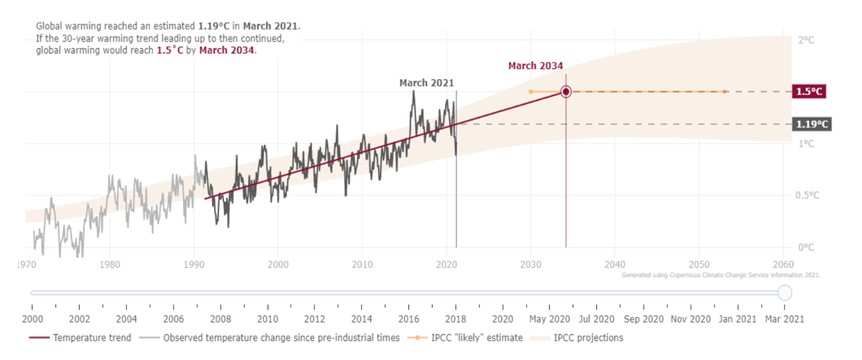
However, the latest Report on Climate change published by IPCC in August 2021 revealed that we are actually already on this track and the threshold of 1,5 degrees Celsius is getting nearer then previously anticipated. This report delivered estimates that it could happen in early 2030s.
It also says that our remaining Carbon “budget” is only some 400 Gigatonnes of CO₂ in order to keep the chances of limiting the global warming below those 1,5°c as at 2100.
Such amount translates into remaining time-frame of around 10YRS roughly coming out of the current production level of 36-40 Gigatonnes of CO₂ that we emit annualy. But, this is only rough assumption and there are already in place more precise calculations and simulations, providing an estimate that real remaining time for reducing the global heating could be even lower.
For instance, Berlin-based Mercator Research Institute on Global Commons and Climate Change (MCC) has developed Carbon Clock showing how much CO2 can be released into the atmosphere; the upper left-hand corner leads you to the scenario for the 2°C target, and the upper right-hand corner to the 1.5°C target. In both cases, the clock shows the remaining carbon budget—and the remaining time. The MCC’s carbon clock only reflects the remaining budget for CO2; the contribution of other greenhouse gases to global heating is subtracted before calculating this remaining carbon budget.
And, if we continue in current trend of increasing CO₂ emissions, the global temperature might get far above even 4 degrees Celsius (compared to pre-industrial level) by the end of this century. Such living conditions would not be acceptable for normal living, no doubts about.
During last two decades, we have been witnessing the extremely severe environmental events world-wide that are providing hard proof to all non-believers that climate change has been really taking place and its final effects are yet to be seen.
Among other, most common environmental events include following:
- Floods and huricanes: de-facto happening every year in USA, but also in other Asian-Oceanic countries
- Wild-fires: during the summer season, usually burning down the major forest parts in Russia, Australia, California, Greece etc.
- Draughts: increasing water-scarcity in Sub-Sahara countries, but also stretching out to other Asian and European countries
- Ice melting: most dangerous event effecting the level of the seas and Arctic ocean may lead to future increase of water levels in coastal cities and regions
- Lands errosions: damaging quality of lands due to water shortage is leading to lower production capacity for some foods and vegetables
- Others: air polution makes some heavy industrialized cities hard to live in and generates regular illnesses that are connected with breathing etc.
What was from the beginning seen as purely environmental issues, has already turned-out to have huge economical effects in the final given the growing property damages, prevention costs, shortages of foods and other supplies and even changing habbits for some nations that may have feel higher stimulus for migration towards the better living conditions. This all generates higher tension in society from unclear future, while on the other hand, there is no space for hesitation and some decisions must be brave and looking beyond the nearest corner.
Thanks to many ecological activists, this trend of global warming has been gaining higher atention in media and politics, bankers, regulators, businesses and non-profit organisation started to devote more time and money on this topic.
It must be understood that there is no country or continent which is not involved in this fight for better climate and it will be a long-term process. On the other hand, there is no such luxury that we could spend additional decade with debates how to tackle this issue, because any action undertaken now will have some positive effect on GHG emissions not sooner than in 5-10 Y.
The main sectors that are contributing to increased CO₂ emissions:
- Oil and Energy production (incl. Extraction of primary sources like Fossil fuels into Energy)
- Transportation and automotive industry
- Cement production and construction industry
- Steel processing industry
- Agriculture and chemicals
- Others (households and individuals)
Below attached graph shows the share of individual countries on carbon emissions:
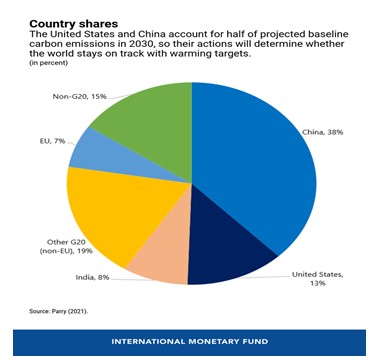
LEGAL FRAME-WORK
Until very recently, all commitments to reduce greenhouse gas emissions were on voluntary basis, only. From the very first initiatives in early 1990s mainly the most developed countries (like G-7) were targeted and supposed to contribute together to the fight for climate. These commitments were concluded within the United Nations (UN) platform and first major event represented Rio Earth Summit (1992), that has implemented adopted a series of environmental agreements, including the UN Framework Convention for Climate change that remains in effect today.
However, that was at the beginning of joint effort and yet the upcoming event, Kyoto Protocol (1997) got into the spotlight with higher public and media attention. For the very first time, it has established top-down legally binding emissions reduction targets (as well as penalties for noncompliance) for developed nations. However during the time, it became clear that it will be hard to enforce any penalties. Further, the first argumentations have been popping-up about the transparency and fairness of reduction targets by individual countries, whereas the United States representatives have claimed that China should have contributed with more challenging commitments to reflect its share on global CO₂ emissions (being the largest emitent world-wide with share close to 40% on total).
Due to persisting conflicts between those two countries, the upcoming major event was signed almost 20Y later, in 2016 in France known under Paris Climate Agreement. When compared with Kyoto Protocol, this was rather an bottom-up structure, whereas 191 UN member countries signed-up this accord with their own individual targets how to reduce global greenhouse emissions (except for Iran, Iraq, Turkey and USA).
Further, it should provide greater flexibility and principle of national ownership was built into it (via Nationally Determined Contributions – own emissions targets on voluntary basis, see extract for EU in the attachment, beneath this article), but with gradual progression (to be more ambitious in upcoming 5Y cycle).
Main target was agreed to reduce global warming well below 2 degrees Celsius above pre 1990 level (optimal level to be less than 1,5 degrees Celsius) by 2030, while developed countries reaffirmed their commitment to mobilize $100 billion a year for this goal.
Further enforcement mechanism by means of CO2 Tax or at least CO2 Allowances trading was brought in, where not yet applied (e.g. China, India etc.). Enhanced Transparency, reporting and monitoring tools (via Climate action tracker, Climate watch etc.) were agreed as well. On top of that, EU countries comitted to reduce emissions by more than 40% by 2030 altogether.
As mentioned previously, United States of America under Donald Trump administration have withdrawn from all previous commitments and did not join Paris Climate Agreement. It was no big surprise as Donald Trump was trying to build again strong America based on traditional industries like Steel, Automotive, Oil and Energy and others, which are facing the longest transition path on the way to its decarbonisation. And further as a proof of constant resistence to any policy changes due to climate issues, nine carbon tax bills since 2018 have failed to make progress in US Congress.
Quite positively, with Joe Biden administration, approach of USA has dramatically changed and United states have very quickly ratified Paris Climate Agreement. Also going forward, current US Administration made several pledges how to substantially invest new money into upcoming decarbonization of US economy.
OUR HOUSE IS ON FIRE! OR ISNT IT?
So, when this fight for climate has been addressed by politics already since 1992, why we are seeing such a slow progress in CO2 emissions reduction? And why is this situation getting small Gretta more angry?
The truth is that in order to achieve agreed commitments to reduce the greenhouse emissions by 40-50% in upcoming 10Y, the annual reduction should read around 4-5%. But, instead according to available statistics, CO2 emissions from fossil fuels (being the main driver for air polution) during the period 2000-2019 have been on the contrary growing in each region, except for USA and EU (but reduction was less than 1% per annum).
Based on that, it seems quite clear that with such approach we cannot simply reach the common target in 2030. And therefore, to be frank, Gretta was right about her furiosity.
Despite the fact that not everyone was appreciating her presentation methods, we must be fair in saying that she did quite a lot of good job, when she was instrumental to get higher support and media attention for this topic. For instance, fight with climate change was almost the major agenda during the EU parliament pools in 2020, which is also her credit.
In addition, our fragile situation was good to seen during the CV19 lock-down, whereas vast part of businesses, factories, office premises, schools and other institutions were running only partly, but this did not contribute to reduce overal cumulated level of GHG in atmosphere. This is simply due to the long-term presence of CO₂ emissions in atmosphere, that takes 20-30Y to evaporate. (on the contrary, Methan keeps floating in the atmosphere for shorter period around 5Y, but it can block 10x more sunlight than CO2).
As per IMF published statistics, global CO₂ emissions in 2020 decreased by around 7% relative to 2019 (as the world has emitted roughly 100 million tons of CO₂ on an average day in 2019/2020). If not anything else, Covid-19 lockdowns showed us the limits of individual action, as CO₂ cumulated concentrations still rose, even if by slightly less than in 2019. In a simple words, shutting down almost whole economy for couple of months will not be sufficient, our situation requires system changes.
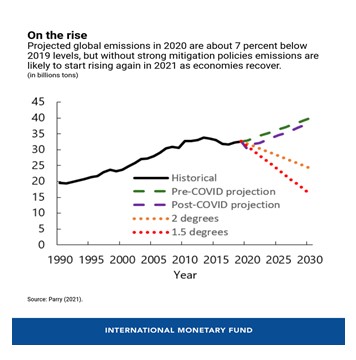
Based on all afore mentioned, over the next decade, global greenhouse gas emissions need to be cut by up to 50% world-wide to be on track for meeting the Paris Agreement goal of containing global warming below targeted 1,5-2°C.
So in order to move forward quickly, we will need more effective tools how to steer away from heavily carbonized economies and systems, that we currently live in. There are plenty of long-term solutions, that could help us in fight with climate change. But when it comes to short-term solutions, that would create immediate effect, our possibilities are limited. Though, what could be implemented right now and certainly will change the behaviour of biggest single poluters is Carbon Tax.
CARBON TAX AND ITS CURRENT MOMENTUM
Momentum on carbon pricing is building up globally. Emissions trading schemes have recently emerged in China, Korea, and Germany, Resistance to carbon pricing in the United States was strong during Trump administration, but things have changed under Biden administration.
For instance, such a policy would be highly effective in terms of reducing emissions. To illustrate, a carbon tax rising to $50 per ton by 2030 would cut CO₂ emissions by 22% in USA alone representing remarkable improvement only via this one “simple” administrative tool. A key sensitivity is the potential impact on energy prices—a $50 carbon tax would increase the future price of gasoline, electricity by 15 resp. 40% as well as on Corporates profitability.
But some countries are already taking initiative. For instance, Canada has pledged to cut greenhouse gases by about 30 percent below current levels by 2030 and to achieve emissions neutrality by 2050. It establishes a carbon price “floor” progressively rising from CAN$40 per ton in 2021 to CAN$170 per ton by 2030. The final decision on price level will be left up to individual Country Districts.
EU leaders are proposing that Carbon tax could eventually start at EUR 50 per 1 ton of CO₂ emissions, which seems to have been already priced-in into recently increased prices of CO₂ Allowances (see graph below).
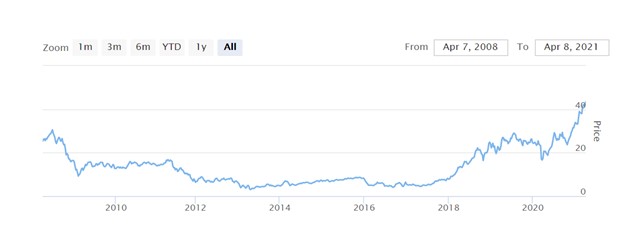
source: Marketwatch.com
So, what is difference between Carbon Tax and Carbon Allowances? Well, CO₂ Emissions Allowance were aimed to be applicable only for large emiting industrial entities (Coal mines, Energy power plants etc.), while these Allowances were transferred from Governments onto these entities for free as an incentive to reduce CO₂ emissions (if any entity suceeded in reducing emitted CO₂ they could simply sell those Allowances on the market and make some additional profit). But due to fact that for a long period, market price of CO₂ Allowances was quite low this incentive did not bring any signifficant progress and instead it represented rather some tool of protection for the entity not to be pennalized so much for CO₂ emissions.
On the contrary, Carbon Tax will be charged to every entity causing CO₂ Emissions incl. Households, small Factories, local heat producers, which means that no-one will be saved from paying the taxes, which will create certain economic discomfort (and may represent sensitive political issue before putting into practice). For instance, Carbon Tax can be hardly penalizing certain industries like Transportation (Road Cargo, Airlines, Ships) if not achieved to be transferred into product price, partially or fully. So that this step will make literally every product or service more expensive over the night, which will be very painful.
sources: www.imf.org, www.wikipedia.org, www.bloomberg-green.com, www.climateactiontracker.org, www.ipcc.ch, www.un.org, www.mcc-berlin.net
